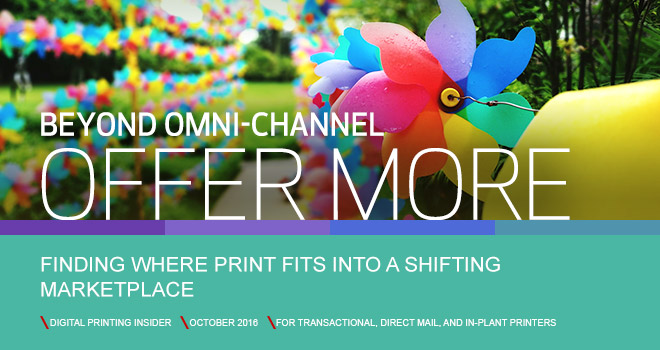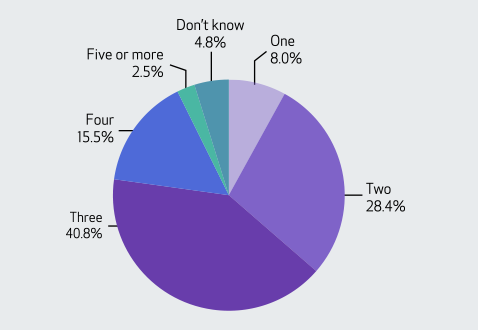The Role of Print in Omni-Channel Marketing
Imagine a world where every advertisement, email, direct mail communication, store visit, mobile offer, and website visit is personalized. This is just the type of experience that today’s consumers are beginning to expect. Market leaders are evaluating and assessing techniques for delivering more accurate, relevant, and personalized touchpoints across all forms of communication. These companies are optimizing customer interactions through print, mobile, social, and online platforms.
In the Canon Solutions America sponsored webinar entitled The Role of Print in an Omni-Channel World presented by Printing Impressions and In-Plant Graphics magazines, InfoTrends Group Director Barb Pellow asserted, “Print needs to be personal.”
Marketers understand that consumers have come to expect personalization in the marketing messages they receive. They are breaking down mass-market lists into segmented groups linked to purchasing trends, values, and priorities or actual one-to-one communication. The key is that “one size does not fit all,” and the focus has shifted to information that is relevant and specific to the intended recipient. According to InfoTrends’ research, corporate clients report a significantly increased emphasis on customized communications, with more than 60% of campaigns personalized (one-to-one) or segmented (one-to-few).
According to Pellow, print will remain a dominant channel. “The big message is that it needs to work well with other channels,” she continues. The term “omni-channel” may be a marketing buzzword, but it refers to a significant shift—today’s marketers must provide a seamless experience, regardless of channel or device. Consumers can now engage with a company in a physical store, on a website or mobile app, through a printed catalog or direct mailer, or through social media. They can access products and services by calling a company on the phone, by using an app on their smartphone, or with a tablet, laptop, or desktop computer. Each component of the consumer’s experience should be consistent and complementary. On average, enterprise respondents report using three different media types for a typical campaign. Meanwhile, 35% of respondents are linking print and digital media and 49% of marketing campaigns have combined print and digital media.
Joining Pellow during this webinar was John Sisson, President of Wilde Agency. “We believe we need to drive engagement through science,” Sisson reports as he introduces his company. Regardless of the channels used, marketers must understand their audience, set goals, and measure against those goals to be successful. Sisson shares insights from various sources about human behavior and how today’s consumers think.
In this webinar, Sisson outlines the five things that should be considered in omni-channel marketing:
- 1. Goals and objectives
- 2. Data strategy
- 3. Customization
- 4. Personalization
- 5. Measurement
Learn more about the decision science principles that guide the Wilde Agency’s marketing strategies and the five keys for achieving omni-channel success during this in-depth webinar. There’s too much at stake in your business to delay taking that first step toward expanding the number of communication channels that you make available as a part of a campaign. Savvy service providers will find a way to deliver on the promise of a personal, omni-channel experience. Start now by watching this exciting webinar!


